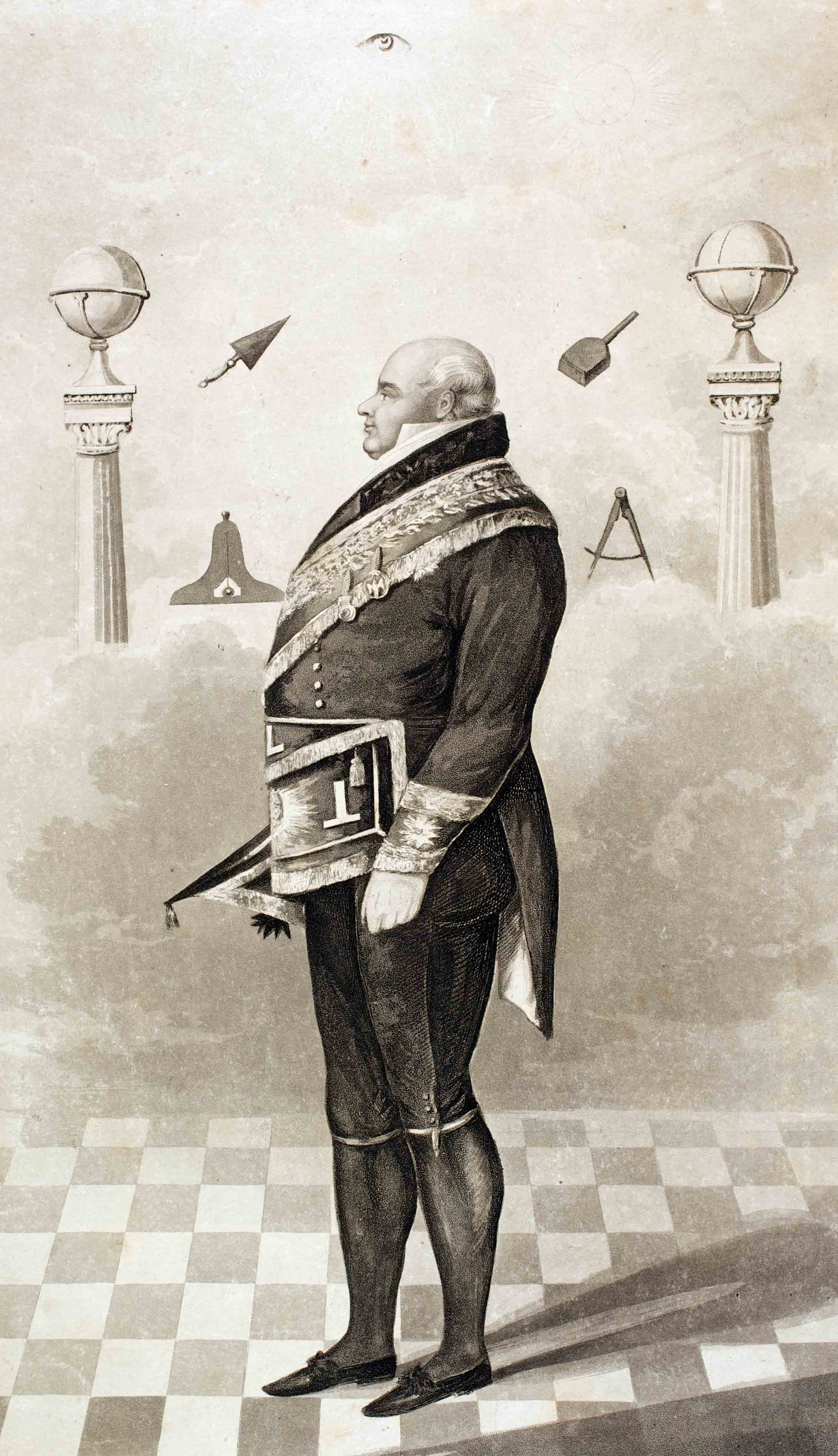In 1819, the Grand Master of the United Grand Lodge of England, the Duke of Sussex, visited Bath to take part in the dedication of a new purpose-built Masonic Hall in York Street. Here is part of the press report from the ‘Bath Herald’ on Saturday 30th September of that year:
 The festival took place on Thursday when, the weather being extremely fine, the town was crowded with an assemblage of beauty and fashion that has not been equalled perhaps in the memory of the oldest inhabitant. There never was known so great an influx of strangers as thronged to witness this ceremony, conducted with that splendour which always characterises the processions of the honourable fraternity. The streets, at an early hour, assumed the appearance of the greatest bustle and expectation; at every window and house-top in the intended line of procession, groups of spectators of every degree, from the lady of title to the humblest domestic, were situated. The procession moved from the Guildhall, to the number of between 800 and 900 brethren, decorated with different orders, emblems, ensigns and ornaments, many of them of the most elegant and costly description. They proceeded up Broad Street, and when the Bath Royal Sussex Lodge arrived opposite the York House, the procession halted, and the brethren dividing, the Royal Grand Master passed through them to join his Grand Lodge, and walked uncovered down Milsom, Union, and Stall Streets, to the Masonic Hall in York Street, returning most graciously the salutations of the immense throng, consisting of nearly the whole population of the City and surrounding country, who delighted with the interesting appearance of the sacred craft, gave way to them to pass unobstructed, and otherwise conducted themselves in the most orderly and admirable fashion. The line of immense length, advanced with imposing regularity, order, and solemnity; while the music, the banners, and the various emblems of the craft, heightened the effect of this magnificent sight, and added to the grandeur and animation of the scene.
The festival took place on Thursday when, the weather being extremely fine, the town was crowded with an assemblage of beauty and fashion that has not been equalled perhaps in the memory of the oldest inhabitant. There never was known so great an influx of strangers as thronged to witness this ceremony, conducted with that splendour which always characterises the processions of the honourable fraternity. The streets, at an early hour, assumed the appearance of the greatest bustle and expectation; at every window and house-top in the intended line of procession, groups of spectators of every degree, from the lady of title to the humblest domestic, were situated. The procession moved from the Guildhall, to the number of between 800 and 900 brethren, decorated with different orders, emblems, ensigns and ornaments, many of them of the most elegant and costly description. They proceeded up Broad Street, and when the Bath Royal Sussex Lodge arrived opposite the York House, the procession halted, and the brethren dividing, the Royal Grand Master passed through them to join his Grand Lodge, and walked uncovered down Milsom, Union, and Stall Streets, to the Masonic Hall in York Street, returning most graciously the salutations of the immense throng, consisting of nearly the whole population of the City and surrounding country, who delighted with the interesting appearance of the sacred craft, gave way to them to pass unobstructed, and otherwise conducted themselves in the most orderly and admirable fashion. The line of immense length, advanced with imposing regularity, order, and solemnity; while the music, the banners, and the various emblems of the craft, heightened the effect of this magnificent sight, and added to the grandeur and animation of the scene.
That Hall remained open for little more than six years, and was eventually sold in 1842 to the Society of Friends, who still own it today.



